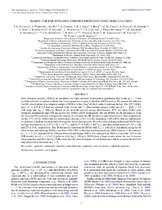| dc.contributor.author | Calanog, J.A. | |
| dc.contributor.author | Wardlow, Julie L. | |
| dc.contributor.author | Fu, Hai | |
| dc.contributor.author | Cooray, Asantha | |
| dc.contributor.author | Assef, R.J. | |
| dc.contributor.author | Bock, J. | |
| dc.contributor.author | Casey, C.M. | |
| dc.contributor.author | Conley, A. | |
| dc.contributor.author | Farrah, D. | |
| dc.contributor.author | Ibar, Edo | |
| dc.contributor.author | Kartaltepe, J. | |
| dc.contributor.author | Magdis, G. | |
| dc.contributor.author | Marchetti, L. | |
| dc.contributor.author | Oliver, S.J. | |
| dc.contributor.author | Perez-Fournon, I. | |
| dc.contributor.author | Riechers, D. | |
| dc.contributor.author | Rigopoulou, D. | |
| dc.contributor.author | Roseboom, I.G. | |
| dc.contributor.author | Schulz, B. | |
| dc.contributor.author | Scott, Douglas | |
| dc.contributor.author | Symeonidis, Myrto | |
| dc.contributor.author | Vaccari, M. | |
| dc.contributor.author | Viero, M. P. | |
| dc.contributor.author | Zemcov, M. | |
| dc.date.accessioned | 2016-01-13T08:55:22Z | |
| dc.date.available | 2016-01-13T08:55:22Z | |
| dc.date.issued | 2013 | |
| dc.identifier.citation | Calanog, J., et al., (2013). HerMES: The far-infrared emission from dust-obscured galaxies. The Astrophysical Journal , 775(61) | en_US |
| dc.identifier.issn | 0004-637x | |
| dc.identifier.uri | http://hdl.handle.net/10566/2056 | |
| dc.description.abstract | The far-infrared (far-IR) luminosities of luminous infrared
galaxies (LIRGs) and ultra-LIRGs (ULIRGs) are dominated by reprocessed thermal dust
emission, due to a combination of star formation and active
galactic nucleus (AGN) activity, with star formation typically
being the more dominant component (e.g., Watabe et al. 2009;
Elbaz et al. 2010). Locally, these sources are rare, although out to
z - 1 they become more numerous and increasingly dominate
the IR luminosity function of galaxies with increasing redshift
(e.g., Le Floc’h et al. 2005; P´erez-Gonz´alez et al. 2005; Caputi
et al. 2007; Magnelli et al. 2009; Rodighiero et al. 2010; Eales
et al. 2010). (U)LIRGs are thought to trace a phase of intense
star formation activity, which is likely followed by, or partially
concurrent with, an episode of vigorous black hole accretion.
It is postulated that upon the cessation of these phases, each
produces an early-type galaxy (Genzel et al. 2001; Farrah et al.
2003; Lonsdale et al. 2006; Veilleux et al. 2009). | en_US |
| dc.language.iso | en | en_US |
| dc.publisher | American Astronomical Society | en_US |
| dc.rights | AAS grants back to authors the non-exclusive right of republication, subject only to giving appropriate credit to the journal in which the article was published. This non-exclusive right of republication gives authors the right to approve or deny reproduction of all or part of the article and to post the final published version online. | |
| dc.source.uri | http://dx.doi.org/10.1088/0004-637X/775/1/61 | |
| dc.subject | Cosmology | en_US |
| dc.subject | Galaxies | en_US |
| dc.subject | Luminosity function | en_US |
| dc.subject | Star formation | en_US |
| dc.subject | Luminous infrared galaxies (LRGs) | en_US |
| dc.subject | Active galactic nucleus (AGN) | en_US |
| dc.subject | Thermal dust emission | en_US |
| dc.title | HerMES: The far-infrared emission from dust-obscured galaxies | en_US |
| dc.type | Article | en_US |
| dc.privacy.showsubmitter | false | |
| dc.status.ispeerreviewed | true | |
| dc.description.accreditation | Web of Science | en_US |

